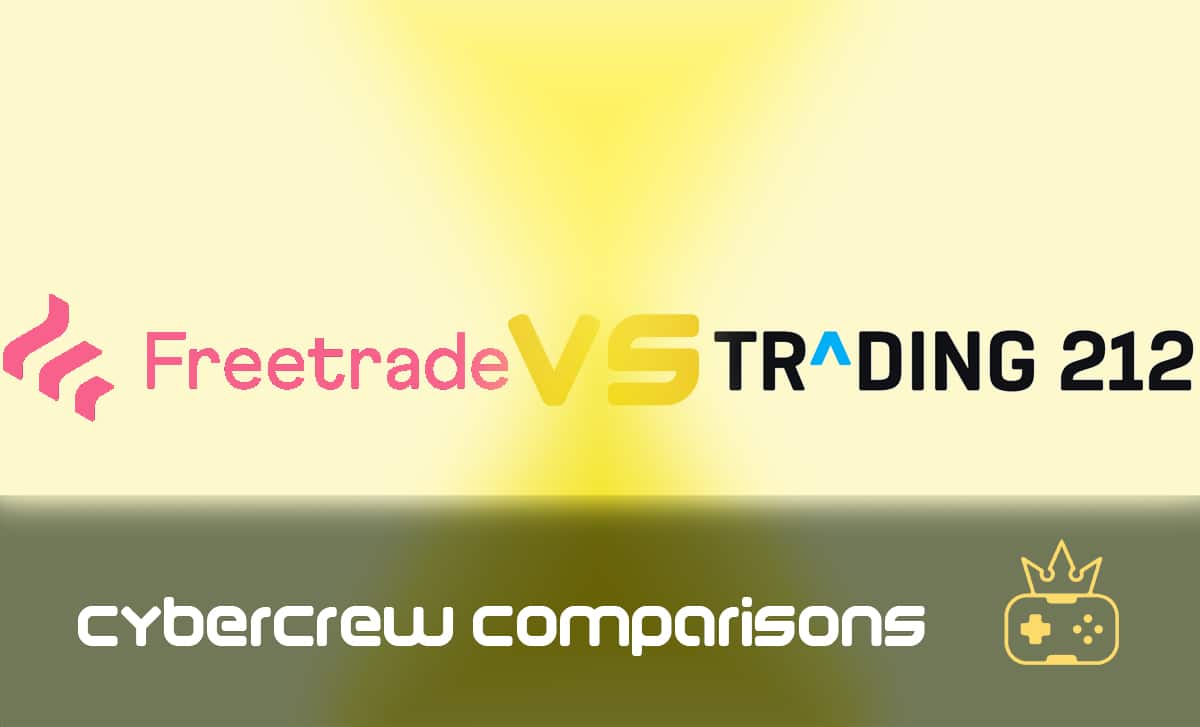Cardano vs Ethereum: The Differences You Need to Know About
Last Updated: February 9, 2024
Cryptocurrencies are all the rage right now. Bitcoin, Litecoin, Ethereum, and Cardano are some of the most popular cryptos. But what are the differences between them? And, more importantly, which one should you choose when scouting for new investment opportunities?
Every investor should know the answer to these essential questions before putting their money into crypto. In this Cardano vs Ethereum comparison, we will explore the differences and similarities between Cardano and Ethereum blockchains, as well as their native cryptocurrencies and market cap.
So, hopefully, by the time you finish reading, you’ll have a better idea of which of these cryptos is worth adding to your portfolio.
What Is Cardano?
Cardano is a decentralised blockchain network that focuses on security, scalability, and interoperability. It was created by Charles Hoskinson, who also co-founded Ethereum.
Cardano’s internal cryptocurrency is called ADA. At the moment, it is one of the most promising cryptocurrencies because it aims to solve problems many other blockchains face. For example, Bitcoin has scaling issues because its blockchain is limited to a certain number of transactions per second. Similarly, Ethereum has also faced scaling problems, exacerbated by the popularity of dApps — Ethereum-based applications that disrupt or establish new business models.
Cardano plans to solve these problems with its unique architecture, consisting of the settlement and computation layers. Cardano has single-handedly improved the interoperability and scalability of its well-developed network that’s yet to experience drastic changes.
On top of that, Cardano is a self-sustainable network. It has a built-in treasury system that funds the development of the blockchain platform. Ethereum, on the other hand, relies on external funding.
What Is Ethereum?
Ethereum is a decentralised, open-source blockchain platform that allows the creation of smart contracts and the development of decentralised applications (dApps). It was founded by Vitalik Buterin in 2015.
One of the main reasons for Ethereum’s popularity is its ability to power dApps. As Ethereum can process transactions quickly and at a low cost, it’s a desirable platform for developers who want to create decentralised applications.
The popularity of dApps has led to an increase in the number of transactions on the network, which has caused congestion and slowed down the network. Ethereum is working on solutions by implementing upgrades such as sharding and Plasma. But these solutions are still in development and have not been implemented yet.
Ethereum’s native cryptocurrency is called Ether (ETH). Today, Ether is one of the most popular cryptocurrencies, having a market cap of around $349.64 billion (roughly £266.62 billion). On top of that, it is the second-largest cryptocurrency after Bitcoin.
Differences Between Cardano and Ethereum
Now that we’ve covered Cardano and Ethereum basics, let’s compare their native cryptocurrencies. In the following sections, I’ll cover the main differences between ADA and ETH, helping you decide which crypto is a better fit for you.
Smart Contracts
Both Ethereum and Cardano projects will power the future of finance with their smart contracts compatible blockchains. Ethereum’s smart contracts are based on the Ethereum Virtual Machine (EVM). Essentially, it’s the software that allows the development of dApps.
On the other hand, Cardano’s smart contracts are based on the Haskell programming language. Haskell is a functional programming language known for its stability and security.
As you can see, the developers had disparate approaches to smart contracts when creating these blockchains. As a result, the nature of Ethereum’s smart contracts is powerful and flexible. At the same time, Cardano’s approach has led to a safe and easy-to-use blockchain system.
Scalability
Scalability in the crypto world is of utmost importance. As more people use blockchains, these networks must handle more transactions. Similar to other blockchains, Ethereum has been struggling with this problem, continuing to suffer speed and scalability issues.
In contrast, Cardano is handling the scalability issue much better than its competitors — it has become faster and more efficient despite having new resources added to its network. Additionally, Cardano plans to bring sharding to its blockchain through Hydra. Hydra sharding can scale the network up to one million transactions per second.
Consensus Mechanisms
A consensus mechanism allows for transactions to be verified and added to the blockchain. For example, Bitcoin uses a proof-of-work (PoW) consensus mechanism, while Ethereum plans to move to a proof-of-stake (PoS) in the near future.
Cardano relies on a PoS consensus mechanism called Ouroboros. Ouroboros is a more advanced PoS consensus mechanism than the one Ethereum is planning to use. Additionally, it is more energy-efficient than PoW, meaning it does not require a lot of computing power.
Architecture
Cardano’s architecture is more sophisticated than Ethereum’s. As we mentioned earlier, Cardano has two layers: the settlement and computation layer.
The settlement layer is responsible for handling transactions and balances. Similarly, the computation layer acts as the network’s brain responsible for running smart contracts. Still, what matters most is that the computation layer makes Cardano more scalable and flexible than Ethereum.
Ethereum’s architecture, on the other hand, is more straightforward. It consists of two layers, the smart contract layer and the transaction layer.
The smart contract layer executes smart contracts, and, as the name says, the transaction layer is in charge of transactions. This design reduces the scalability of Ethereum.
So, what does all this mean?
To put it simply, Cardano is a more advanced blockchain than Ethereum. It is more scalable and flexible, and its smart contracts system is more secure.
However, Ethereum has certain advantages over Cardano. It is more popular and has a larger community. In addition, Ethereum’s dApps are more widely used than Cardano’s.
Fork Changes
A fork is a change to the protocol of a blockchain, and it can be temporary or permanent.
Ethereum has gone through three hard forks in its history. On the other hand, Cardano has recently completed the long-awaited Alonzo hard fork that empowered this blockchain with smart contracts capabilities.
Governance
Governance is the process of making decisions about a blockchain. Ethereum has a decentralised governance model, which means anyone can participate in the decision-making process.
Cardano’s is also a decentralised, open-source blockchain network. However, its governance model is more complex than Ethereum’s. For example, voting power depends on the amount of ADA someone has. To put it another way, the more ADA you have in possession, the more influence you have on decision making.
Security
Both Ethereum and Cardano are secure blockchains. However, Cardano’s security measures are much more stringent than Ethereum’s. For example, Cardano has a rigorous peer review process for verifying smart contracts.
Ethereum, on the other hand, doesn’t implement these practices. Consequently, it is more vulnerable to attacks. Instead of relying on the peer review process, Ethereum keeps the network secure with a bounty system. Under this system, anyone can report a security bug and receive a reward.
ADA vs ETH
ADA is a cryptocurrency based on the Cardano blockchain. It has several advantages over Ethereum, including superior security and scalability. In addition, ADA is a famous crypto because it has a low supply and is deflationary, meaning its value will likely increase over time.
ETH is the native cryptocurrency of the Ethereum blockchain. It is the second-largest crypto by market cap after Bitcoin. ETH could be useful for payments because of its fast transaction time. However, it is not as scalable or secure as ADA.
Mining Process
Mining is the process of creating new crypto. What you should know is that Cardano cannot be mined because it relies on the proof-of-stake system. Ethereum, on the other hand, can be mined with a computer. The mining process makes it more accessible to people who want to get involved in the crypto world.
Cardano and Ethereum Prices
Ether
Ethereum’s crypto has had a tumultuous price history. It reached an all-time high of $4,865.57 (£3,691) on November 11, 2021. Compared to its lowest price, this is a significant increase in value. Although the price has drastically dropped since this all-time high, Ether is still considered a high-value cryptocurrency.
| ETH’s all-time high: | $4,865.57 (£3,691) |
| ETH’s all-time low: | $0.81 (£0.61) |
| Max supply: | Unlimited |
| Market cap: | $349.64 billion (£265.26) |
| 24h trading volume | Roughly $545.8 million (£414.08 million) |
According to the current market conditions, the Ethereum price today is $2,559,63 (roughly £1,963).
ADA
Cardano’s ADA has had a much steadier price history than Ethereum. It reached an all-time high of $3.10 (£2.35) on September 2, 2021, and it has remained relatively stable after the last significant drop.
| ADA’s all-time high: | $3.10 (£2.35) |
| ADA’s all-time low: | $0.01 (£0.0076) |
| Max supply | 45 billion |
| Market cap: | $26.6 billion (£20.1 billion) |
| 24h trading volume: | Roughly $56.8 million (£43 million) |
If, however, ADA seems like a more attractive offer, you can get one coin for $0.79 (roughly £0.61). ADA is currently undervalued compared to ETH, making it a good investment opportunity.
How To Buy Ethereum or Cardano?
Are you interested in buying Ethereum or Cardano cryptocurrencies after reading this Cardano vs Ethereum comparison? Excellent choice! These cryptos are some of the most promising and exciting projects in the blockchain space today.
To help you get started, we’ve prepared comprehensive guides on how to buy Ethereum and how to buy Cardano. So, make sure to check them out and start acquiring your favourite cryptocurrency hassle-free.
Wrap Up
Now that you’re familiar with the differences and similarities between Cardano and Ethereum, you can make an informed decision on which one to invest in. ADA is a more advanced cryptocurrency with potential, while ETH’s community and value are good reasons to invest.
So, who wins in the Cardano vs Ethereum battle?
Both ADA and ETH are popular cryptocurrencies with potential, and any experienced investor will most likely have both of these excellent cryptocurrencies on their portfolio. While it all boils down to your personal preferences, I believe that ADA is a better investment in the long run.
However, I must add that you shouldn’t take my words as financial advice. If you want to get the most out of your investments, it would be best to talk to other traders before making any decisions regarding your finances.
FAQ
Some say that Cardano is a better investment than Ethereum. Still, these cryptocurrencies are on their way to becoming a significant part of our lives, which is why many traders invest in both.
Cardano was designed with efficiency in mind. Its proof-of-stake consensus mechanism is more valuable and faster than the proof-of-work consensus mechanism (which is used by Bitcoin and other cryptos), allowing quicker transaction processing.
ADA transactions usually take around 10–20 seconds. However, they can be faster or slower depending on the network conditions.



![How to Sell on Depop in the UK [2024 Guide]](https://cybercrew.uk/wp-content/uploads/2023/06/Selling-on-Depop-UK.png)






